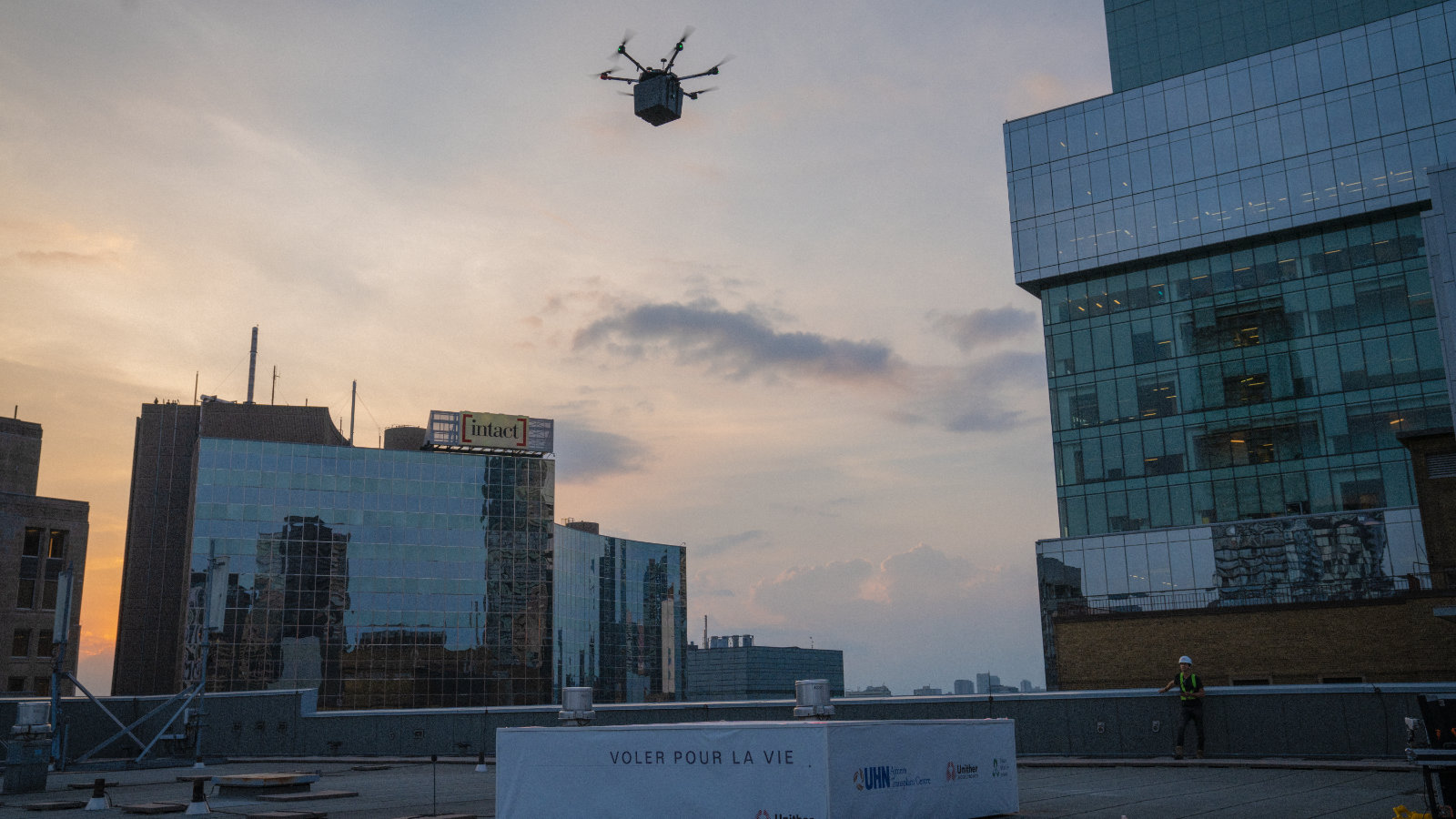Stay Up to Date
Submit your email address to receive the latest industry and Aerospace America news.
Medical professionals in U.S. say they need the help
One of the busiest organ transplant hospitals in the U.S., the University of California, San Francisco Medical Center, set a record for lung transplants last year, performing 95.
That new record mirrored the doubling of annual transplants across the U.S. from 23,000 in the year 2000 to 46,632 in 2023, according to federal statistics. This growth was driven by policy changes and advances in medical technology, including transportation containers that minimize damage to organs by pumping blood or oxygen through them. Such containers also extend the transport time beyond the six-hour limit that had been the standard in the industry.
Even with this longer window of viability for organs, the growth in the number of transplants has increased costs and the logistical challenges of finding a vehicle, driver, pilot and aircraft to transport the organs during that limited time. While organs are currently moved over longer distances by conventional airplanes or helicopters, some players in the emerging advanced air mobility market think they can lower costs and provide far more aircraft options with electric drones and passenger air taxis outfitted for cargo.
“We’re frequently held up because of the pilot availability, aircraft availability, et cetera,” says Jasleen Kukreja, a professor of surgery at the UC San Francisco Medical Center and the program and surgical director for lung transplantation.
“We are more aggressive now,” she explains, “We’re taking organs that we didn’t take previously and for patients who are sicker now.”
Asked if the growth trends in transplant activity will continue, Kukreja says she doesn’t know but hopes so.
When a few hours can mean life or death, transportation delays are the focus of much attention and effort by physicians like Kukreja — and a growing number of transportation companies, including electric aircraft developers.
The Vermont company BETA Technologies, for example, has received orders and letters of intent for its electric ALIA air taxis from United Therapeutics, a Maryland biotechnology company that develops methods to extend the lives of people with lung disease and other conditions. United Therapeutics also has a subsidiary in Ontario, Unither Biotechnologies, developing an electric helicopter to transport organs.
In an email, BETA tells me it has designed ALIA and its charging methods “to carry out organ transplant missions in a safer, cleaner, more efficient way” and to reduce costs compared to fossil-fueled aircraft. BETA also said it believes the ALIA’s wings provide a safer alternative to helicopter rotors in bad weather.
Unither’s website states that its goal is to deliver human organs “with a low impact on the environment” via emissions-free electric aircraft.
United Therapeutics, referring to the ALIA, said such electric aircraft are “the future of on-demand organ transportation” in a 2021 press release from BETA.
While electric aircraft developers predict that their designs will be less expensive to operate than fossil-fueled ones, the cost of transport could be further reduced by eliminating the need for a pilot on certain trips through the use of autonomous, remotely piloted drones, says Saverio La Francesca, a California cardiothoracic surgeon and entrepreneur who co-founded Longitude Mobility, a Silicon Valley company that advises aviation companies on transporting human organs.
He is also a principal surgeon at Los Angeles-based TransMedics, a medical technology company that transports human organs inside portable mini-laboratories that control temperature and circulate blood through hearts or oxygen through lungs. While TransMedics owns several Embraer light jets, it must also rely on other types of aircraft if its own are not available.
The stressed system for transporting organs sometimes leaves regional transport at the mercy of an available pilot or aircraft, La Francesca tells me.
He notes that experiments have shown that organs can be successfully transported by drone, including a 2021 flight by Unither Bioelectronics in which a lung was carried from point to point in Toronto, and a University of Maryland flight in Baltimore in 2019 with a kidney. Both organs were implanted in patients.
“I’m really, really frustrated that we’ve been doing reconnaissance and bombing for the military with drones for three or four decades, and yet we can’t be faster to improve the lives of our patients,” La Francesca says. “And I’m not against military use, I’m just saying we could paint drones red or something like that and then people who see them flying would say, ‘Oh, there’s an organ in that one.’”
Get the latest news about advanced air mobility delivered to your inbox every two weeks.
About paul brinkmann
Paul covers advanced air mobility, space launches and more for our website and the quarterly magazine. Paul joined us in 2022 and is based near Kennedy Space Center in Florida. He previously covered aerospace for United Press International and the Orlando Sentinel.
Related Posts
Stay Up to Date
Submit your email address to receive the latest industry and Aerospace America news.




